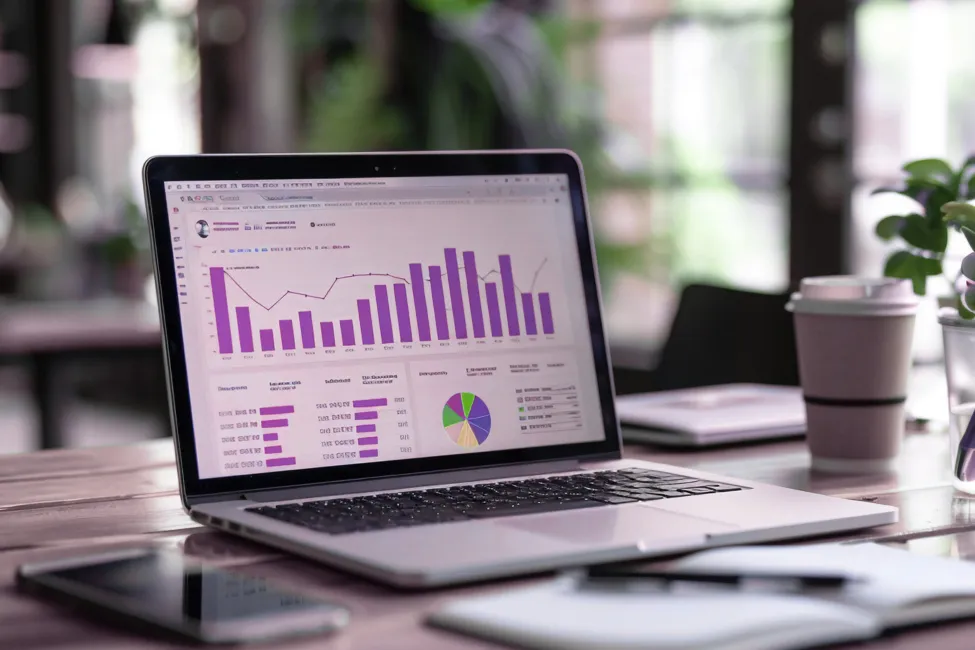
Not just a buzzword: Why visibility is key to scaling your business
The juggling act of a business owner
If you're a business owner, you're probably all too familiar with the reality of "wearing ten different hats." From overseeing client projects and managing your team to handling marketing and keeping tabs on cash flow, the day-to-day can feel like one long juggling act.
Amid this chaos, one critical element often flies under the radar: operational visibility. It’s not just another thing to add to your already packed to-do list. It’s the foundation for sustainable growth.
Clarity across your client interactions, team workload, and financials empowers you to make smarter decisions, build stronger relationships, and scale with confidence. And often, this clarity doesn’t require complex tech. With a simple dashboard, you can get the oversight you need without overhauling your whole setup.
Operating in the dark: the hidden costs
When you don’t have visibility, the gaps show up in ways that hurt your business. For example:
Inefficiencies multiply. Tasks get duplicated, communication falls through the cracks, and projects bottleneck.
Growth stalls. Without a clear view, it's hard to spot trends, identify profitable niches, or adapt to client needs.
Decisions rely on guesswork. You're flying blind without the right data at your fingertips.
Money leaks. Poor tracking means mismanaged budgets and missed revenue opportunities.
Time gets wasted. You and your team spend hours manually chasing updates, checking progress, and trying to piece together what’s actually going on.
We often see businesses managing client communication across email, WhatsApp, and phone calls, with no central place to track what was said, when. We also see businesses rely on memory and a spreadsheet to follow up with leads...until follow-ups started falling through the cracks.
Without systems in place, even the best intentions can lead to missed opportunities, duplicated work, and rising stress levels.
The visibility trifecta: Clients, Workload & Finances
1. Clients
Getting a full picture of each client’s journey from what they’ve been promised, to what they’re expecting, and where they’re at helps you stay on the front foot and deliver excellent service through consistent communication and follow-through. One business owner said their biggest win came from simply being able to send clients regular updates using screenshots from their project dashboard.
Even a light CRM setup or project management tool that captures client interactions can make a big difference. It doesn't need to be complex, it’s about having a clear reference point.
2. Workload
One business was drowning in requests but had no clear view of team capacity. Tasks were slipping through the cracks simply because no one realised they were unassigned. After introducing basic workload tracking, they quickly spotted the gaps and reallocated work, leading to faster turnaround times, happier clients, and a more balanced team.
Even simple workload tracking tools can help you spot capacity issues before they turn into missed deadlines or burnout. It’s less about the platform and more about having a clear view of who’s working on what.
3. Finances
One business owner was managing invoicing across emails and their accounting software, but had no quick way to see how projects were performing. By setting up a simple financial dashboard in their accounting software, they could finally track which clients were profitable and where time (and money) were slipping through the cracks.
Even basic visibility like knowing who’s paid, who hasn’t, and how much time is spent on each job can make a big difference.
The role of systems and processes
You don’t need enterprise-level software to gain visibility. What you do need is consistency.
We’ve seen business owners resist implementing systems because they feared losing flexibility. But it’s the opposite; clarity actually gives you more control. When you can see what’s happening, you can pivot faster and make better calls.
Whether it’s a formal onboarding checklist, a documented proposal process, or a consistent way to track team tasks, small steps towards systemising operations create space for growth.
Tools that make it easier
Many small businesses benefit from all-in-one tools that centralise communication, tasks, and timelines. For example, software like ClickUp, Asana, Notion or Monday.com lets you create project timelines, track team workloads, and even integrate with Google Calendar for seamless scheduling.
One business chose ClickUp because it integrated smoothly with their existing Google Workspace setup, saving them from app-hopping and scattered information. They used it to build simple dashboards they could screenshot and send to clients, giving transparency without the complexity of giving direct access.
Dashboards also don’t need to be complicated. Even a basic one, pulling data from your CRM, email marketing, or invoicing software, can give you real-time insights that drive smarter decisions.
Practical first steps for busy owners
If you're feeling overwhelmed by the idea of “adding more,” here’s where to start:
Pick one pain point. Focus on the biggest area of frustration, like invoicing or tracking work-in-progress and work on visibility there first.
Use what you’ve got. You don’t always need new tools. Often, a better use of what you already have can be enough.
Start simple. A basic setup like a shared task list or lightweight dashboard can go a long way when used consistently.
Build habits, not just systems. The goal is sustainable visibility, not perfection. Start small and improve as you go.
Some business owners start with quick wins like setting up lightweight dashboards or creating organised client folders. Others bring in outside help, such as a fractional COO or systems expert, to implement changes without adding to their already full workload.
See more, achieve more
At the end of the day, visibility isn’t a luxury, it’s a lever. When you can clearly see what’s working, what’s not, and where your time and money are going, you’re no longer reacting. You’re leading.
So whether your goal is to grow, step back, or one day sell your business, investing in operational visibility now gives you the clarity to move forward with confidence.
